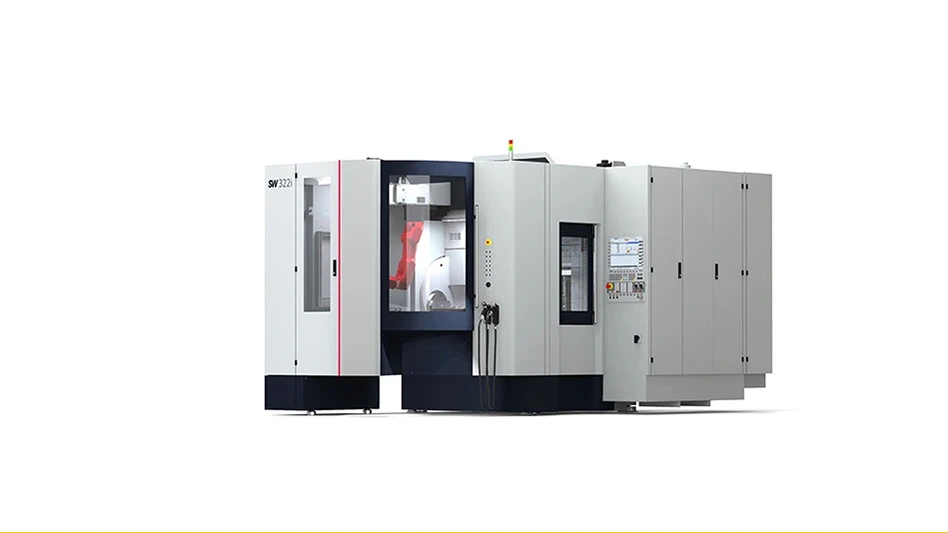
North Carolina State University (NC State) researchers have developed a robotic gripping device gentle enough to pick up a drop of water, strong enough to pick up a 6.4kg (14.1 lb) weight, dexterous enough to fold a cloth, and precise enough to pick up microfilms 20x thinner than a human hair. In addition to possible manufacturing applications, the researchers also integrated the device with technology to control the gripper by electrical signals produced by muscles in the forearm, demonstrating its potential for use with robotic prosthetics.
“It’s difficult to develop a single, soft gripper capable of handling ultrasoft, ultrathin, and heavy objects, due to trade offs between strength, precision, and gentleness,” says Jie Yin, corresponding author of a paper on the work and an associate professor of mechanical and aerospace engineering at NC State. “Our design achieves an excellent balance of these characteristics.”
The design for the new grippers builds on an earlier generation of flexible, robotic grippers that drew on the art of kirigami, which involves cutting and folding two-dimensional sheets of material to form three-dimensional shapes.
The new design can achieve high degrees of strength and gentleness because of how it distributes force throughout the structure of the gripper.
“The strength of robotic grippers is generally measured in payload-to-weight ratio,” Yin says. “Our grippers weigh 0.4g and can lift up to 6.4kg. That’s a payload-to-weight ratio of about 16,000. That’s 2.5x higher than the previous record for payload-to-weight ratio, which was 6,400. Combined with its characteristics of gentleness and precision, the strength of the grippers suggests a wide variety of applications.”
Other benefits
The new technology’s attractive characteristics are driven primarily by its structural design, rather than by the materials used to fabricate the grippers.
“In practical terms, this means you could fabricate the grippers out of biodegradable materials, such as sturdy plant leaves,” says Yaoye Hong, co-author of the paper and a recent Ph.D. graduate from NC State. “That could be particularly useful for applications where you would only want to use the grippers for a limited time, such as when handling sharp medical waste, such as needles.”
The researchers also integrated the gripping device with a myoelectric prosthetic hand, meaning the prosthesis is controlled using muscle activity.
“This gripper provided enhanced function for difficult to perform tasks using existing prosthetic devices, such as zipping, picking up a coin, and so on,” says Helen Huang, co-author of the paper and Jackson Family Distinguished Professor in the Joint Department of Biomedical Engineering at NC State and the University of North Carolina at Chapel Hill.
“The new gripper can’t replace all of the functions of existing prosthetic hands, but it could be used to supplement those other functions,” Huang says. “And one of the advantages of the kirigami grippers is you wouldn’t need to replace or augment the existing motors used in robotic prosthetics. You could simply make use of the existing motor when using the grippers.”
In proof-of-concept testing, the researchers demonstrated the kirigami grippers could be used with the myoelectric prosthesis to turn the pages of a book and pluck grapes off a vine.
North Carolina State University
https://www.ncsu.edu

Explore the January/Februrary 2024 Issue
Check out more from this issue and find your next story to read.
Latest from Today's Medical Developments
- Tariffs threaten small business growth, increase costs across industries
- Feed your brain on your lunch break at our upcoming Lunch + Learn!
- Robotics action plan for Europe
- Maximize your First Article Inspection efficiency and accuracy
- UPM Additive rebrands to UPM Advanced
- Master Bond’s LED415DC90Med dual-curable adhesive
- Minalex celebrates 60 years of excellence in miniature aluminum extrusions
- Tormach’s Chip Conveyor Kit for the 1500MX CNC Mill





